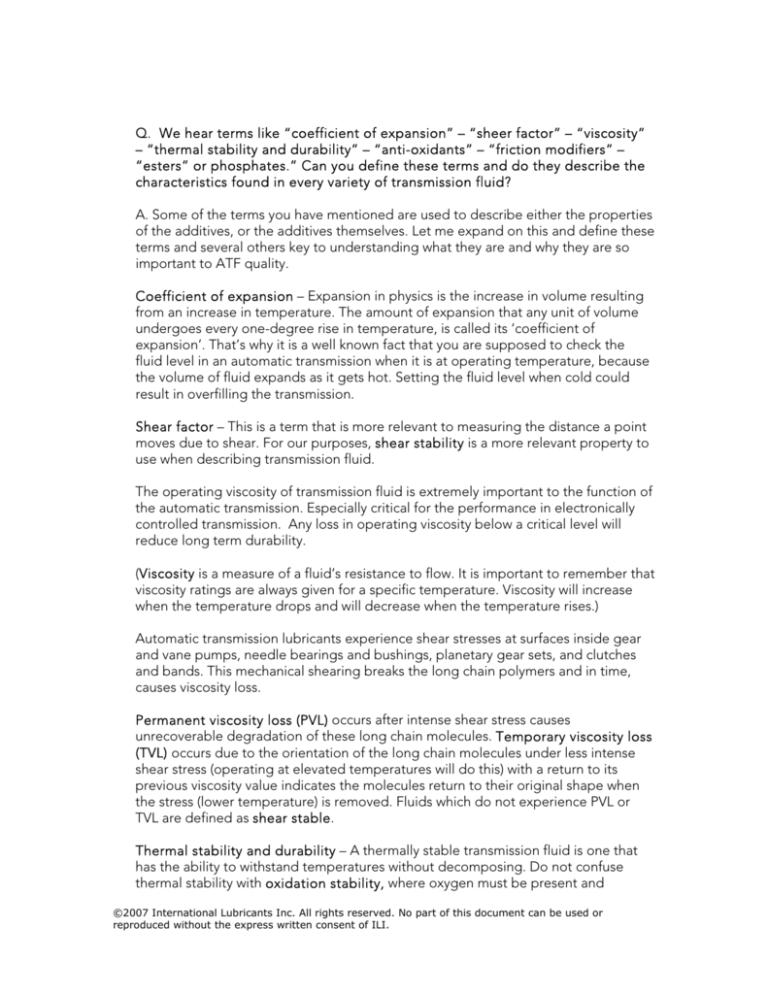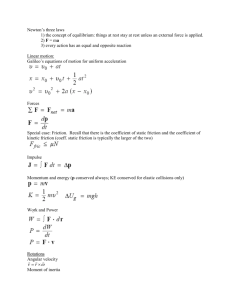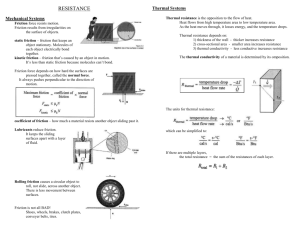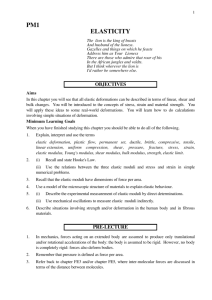
Q. We hear terms like “coefficient of expansion” – “sheer factor” – “viscosity”
– “thermal stability and durability” – “anti-oxidants” – “friction modifiers” –
“esters” or phosphates.” Can you define these terms and do they describe the
characteristics found in every variety of transmission fluid?
A. Some of the terms you have mentioned are used to describe either the properties
of the additives, or the additives themselves. Let me expand on this and define these
terms and several others key to understanding what they are and why they are so
important to ATF quality.
Coefficient of expansion – Expansion in physics is the increase in volume resulting
from an increase in temperature. The amount of expansion that any unit of volume
undergoes every one-degree rise in temperature, is called its ‘coefficient of
expansion’. That’s why it is a well known fact that you are supposed to check the
fluid level in an automatic transmission when it is at operating temperature, because
the volume of fluid expands as it gets hot. Setting the fluid level when cold could
result in overfilling the transmission.
Shear factor – This is a term that is more relevant to measuring the distance a point
moves due to shear. For our purposes, shear stability is a more relevant property to
use when describing transmission fluid.
The operating viscosity of transmission fluid is extremely important to the function of
the automatic transmission. Especially critical for the performance in electronically
controlled transmission. Any loss in operating viscosity below a critical level will
reduce long term durability.
(Viscosity is a measure of a fluid’s resistance to flow. It is important to remember that
viscosity ratings are always given for a specific temperature. Viscosity will increase
when the temperature drops and will decrease when the temperature rises.)
Automatic transmission lubricants experience shear stresses at surfaces inside gear
and vane pumps, needle bearings and bushings, planetary gear sets, and clutches
and bands. This mechanical shearing breaks the long chain polymers and in time,
causes viscosity loss.
Permanent viscosity loss (PVL) occurs after intense shear stress causes
unrecoverable degradation of these long chain molecules. Temporary viscosity loss
(TVL) occurs due to the orientation of the long chain molecules under less intense
shear stress (operating at elevated temperatures will do this) with a return to its
previous viscosity value indicates the molecules return to their original shape when
the stress (lower temperature) is removed. Fluids which do not experience PVL or
TVL are defined as shear stable.
Thermal stability and durability – A thermally stable transmission fluid is one that
has the ability to withstand temperatures without decomposing. Do not confuse
thermal stability with oxidation stability, where oxygen must be present and
©2007 International Lubricants Inc. All rights reserved. No part of this document can be used or
reproduced without the express written consent of ILI.
oxidation is occurring instead of thermal decomposition. The transmission fluid
durability of course, is seriously affected by the onset of either decomposition or
oxidation. Both conditions will eventually result in viscosity loss that will cause failure
of the transmission fluid and then shortly thereafter the transmission.
Anti-oxidants – Anti-oxidants are part of the additive package used to formulate
automatic transmission fluid. Their purpose is to lengthen fluid life, permit high
temperature tolerance, and prevent the formation of sludge and varnish. These
additives control oxidation by deactivating chains that start the oxidation that leads
to sludge and varnish.
Friction modifiers – Friction modifiers are additives that make the fluid more
“slippery” by decreasing the coefficient of static friction.
In other words, the frictional forces between clutches and bands are higher when
there is no motion or sliding between the clutches and steels (or band and drum) as
lockup occurs. When the clutches and steels (or band and drum) are sliding as
lockup occurs, this reduces frictional force.
The smaller the frictional surface on the clutch plates, or band, the greater the
requirement for the elimination of slippage to prevent heat generation and wear.
This was a requirement of non-friction modified automatic transmission fluid like the
Ford Type F. General Motors transmissions require a friction modified or “slippery”
fluid to ensure the proper “shift feel” that is so important to G. M. transmissions.
What actually occurs is the coefficient of static friction is less than the coefficient of
dynamic friction. As the clutches and bands lockup to complete the shift, there is less
engagement feel transmitted to the driver resulting in a more “pleasing” shift.
Currently, there is very little difference in the frictional requirements for Ford and
G.M. transmissions which is why so many available approved transmission fluids are
DEXRON / MERCON approved. Other manufacturers such as Daimler-Chrysler and
Toyota have different frictional requirements for their transmission fluids. These
differences in frictional requirements are the main reason why there is no universal
specification for automatic transmission fluid in place.
Esters – Esters are synthetic lubricants reacted from fats and vegetable oils. An ester
is a product of the reaction of an acid (usually organic) and an alcohol. The process
of producing an ester is called esterification. Esters have very unique lubrication
properties and are the basis for some of the most effective lubrication products
available today. LUBEGARD’s Liquid Wax Esters (LXE) are derivatives of seed oils
high in erucic acid. Esters can be used as a main base oil or as a quality enhancing
additive. Chemical stability and lubricity over a wide range of temperatures are just a
few of the beneficial properties of ester based lubricants. The biggest drawback to
their wider use is the cost factor. Esters are expensive to use.
Phosphates - Phosphate is a chemical term that is used to describe any of several
substances containing phosphorus. How this applies to transmission fluids, is that
phosphorus is used in transmission additive packages to enhance wear protection
and provide friction modification. It has to a great extent been used in current ATF’s
©2007 International Lubricants Inc. All rights reserved. No part of this document can be used or
reproduced without the express written consent of ILI.
to replace the zinc that was used with phosphorus in the past for the same purpose.
Selection of anti-wear and friction modification additives is very important as
interaction with other components must be kept to a minimum to avoid causing
corrosion of copper or other metallic components of the automatic transmission.
©2007 International Lubricants Inc. All rights reserved. No part of this document can be used or
reproduced without the express written consent of ILI.









